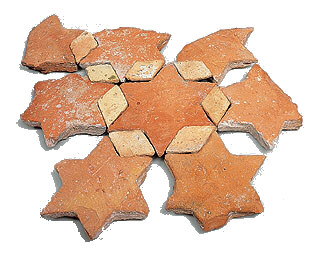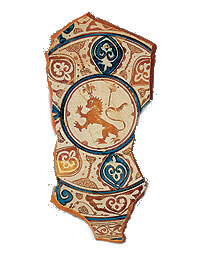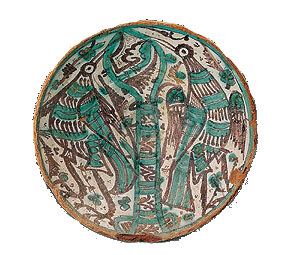 Stavans never fully comes to terms with the question of whether or not Sephardic writers inhabited the same conceptual world as Ashkenazim. Are Sephardim a part of European culture, as suggested by the Spanish origins of their culture or (in some cases) by their European addresses? Or are Sephardim part of a larger Arab-Islamic universe? Relatedly, are Sephardim only modern to the extent that they adopt European languages, ideas, and forms of self-expression?
Stavans never fully comes to terms with the question of whether or not Sephardic writers inhabited the same conceptual world as Ashkenazim. Are Sephardim a part of European culture, as suggested by the Spanish origins of their culture or (in some cases) by their European addresses? Or are Sephardim part of a larger Arab-Islamic universe? Relatedly, are Sephardim only modern to the extent that they adopt European languages, ideas, and forms of self-expression?
The selections from a group of young Sephardic writers like Ruth Knafo Setton, Ruth Behar, Sami Chetrit, and Alcalay serve as a counterpoint to this questioning. Hearkening back to the polyglot humanism and cultural historicism of Jabès and Cohen, these young writers are proud and agitated Sephardim who are unafraid to articulate their confusion and rage to a world that quite often does not even recognize them. While Jabès and Cohen grew up in a world where Sephardim continued to live out their historical culture, the younger Sephardim know that this world is not only fading away, but as a culture it has become a major source of controversy in Zionist polemics and the general tenor of Ashkenazi Jewish hegemony in Israel and the West.
In this sense, the exclusion from the book of Israeli-Arab Jewish writers like Samir Naqqash, Eli Amir, Yitzhak Gormezano Goren, Shimon Ballas, Ronit Matalon, and Nissim Rejwan, all of whom appear, it is true, in Alcalay’s crucially important anthology Keys to the Garden (City Lights 1999), skews the demographic of the work towards those voices that are a closer fit to the current Jewish establishment and to the idea that Sephardic culture is more European than Middle Eastern.
 In addition, Stavans fails to provide an analytical framework to allow the reader to understand the historical trajectory of Sephardic culture. As might be expected in an Ashkenazi context but utterly inappropriate in a Sephardi context, Stavans does not at all enter into the world of Sephardi religious culture and barely grazes the matter of classical Sephardic philosophy and poetics, which has been carefully and brilliantly articulated for the contemporary student in the brilliant studies of Ross Brann. Even as the inclusion of Roditi’s poem limns the classical heritage of Sephardi poetry and letters, the reader remains blissfully unaware of the rich and fruitful links between Sephardic writing, deeply embedded within the normative Jewish religious culture, and the Arab civilization that had been constructed in the High Middle Ages.
In addition, Stavans fails to provide an analytical framework to allow the reader to understand the historical trajectory of Sephardic culture. As might be expected in an Ashkenazi context but utterly inappropriate in a Sephardi context, Stavans does not at all enter into the world of Sephardi religious culture and barely grazes the matter of classical Sephardic philosophy and poetics, which has been carefully and brilliantly articulated for the contemporary student in the brilliant studies of Ross Brann. Even as the inclusion of Roditi’s poem limns the classical heritage of Sephardi poetry and letters, the reader remains blissfully unaware of the rich and fruitful links between Sephardic writing, deeply embedded within the normative Jewish religious culture, and the Arab civilization that had been constructed in the High Middle Ages.
For the more serious student of Sephardic culture, the book is a bit thin on explanatory matter and context. It refrains from inserting itself into many of the current polemics and controversies over the inclusion of Sephardic culture and history in the modern Jewish curriculum and the manner in which Sephardi scholars like Ammiel Alcalay, Ella Shohat, Sami Chetrit and the present writer have attacked Ashkenazi racism and hegemony. Yet it successfully presents the rich and enlightened tapestry of Sephardic writing that has been removed from the stage of modern Jewish life.

In the end, the inability of publishers like Schocken to hand over projects like The Schocken Book of Modern Sephardic Literature to actual living and breathing Sephardim causes one to reflect, with all due respect to Professor Stavans, on the continued racism that exists in the institutional Jewish world. Rarely are Sephardi intellectuals allowed to speak for themselves. At a recent program at the 92nd Street Y, for example, Stavans held an event for the book with non-Sephardi Jane Gerber taking the part of Sephardi “expert.” One wonders how the larger Jewish community would be up in arms if Jewish "experts" were always non-Jews.
More troubling than the editorship of The Schocken Book of Modern Sephardic Literature, however, is the fact that such a book is so clearly an anomaly within modern Jewish culture. Seeing that there are so few opportunities to discover the riches of the Sephardic past, the book is a vital and mandatory purchase for Sephardim unaware of their own culture, as well as those Ashkenazim who can see clear of their community’s historic animus and appreciate the rich and varied literary heritage of the Sephardim for the massive achievement that it is. All the major figures are here and presented in a way that does ample justice to their achievements. Yet why is it, practically the only book of its kind?

A review of You are My Witness: The Living Words of Marshall Meyer
June, 2005
March, 2005
A family of Guatemalan Jewish artists
September, 2004
March, 2004
Is Zionism Colonialism?
June, 2003
The soft borders between Jewish particularism and universalism
February, 2003



Sephardic Literature: The Real Hidden Legacy
David Shasha
plus Jordan Elgrably on the Sephardic Intellectual
Guilt and Groundedness
Jay Michaelson
David: The Original Drama King
Dan Friedman
The Doctor
Sarah Schulman
After sepia photographs
Hila Ratzabi
A War in Postcards
Alon K. Raab
Archive
Our 760 Back Pages
Zeek in Print
Summer 2005 issue now on sale
About Zeek
Mailing List
Contact Us
Subscribe
Tech Support
Links
Limited Time Offer
Two years of Zeek in
print for only $20.
Offer expires 9/30.
Click this button
to purchase:
From previous issues:
How can you be gay and Jewish?
The Pursuit of Justice
Let them Eat Myth
Jay Michaelson
Emily Rosenberg
Douglas Rushkoff
 Email us your comments
Email us your comments